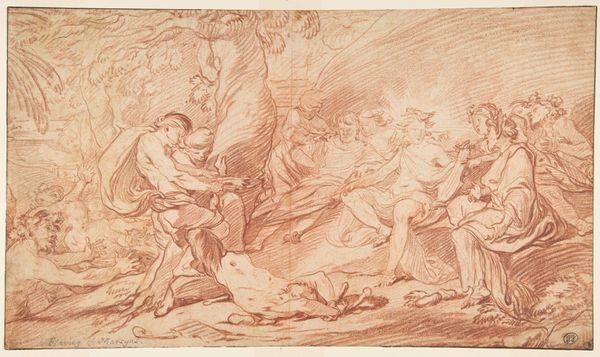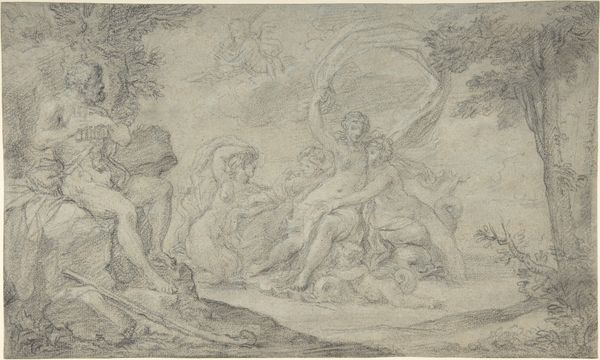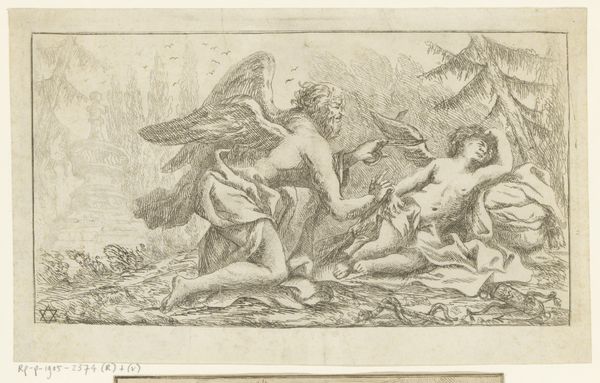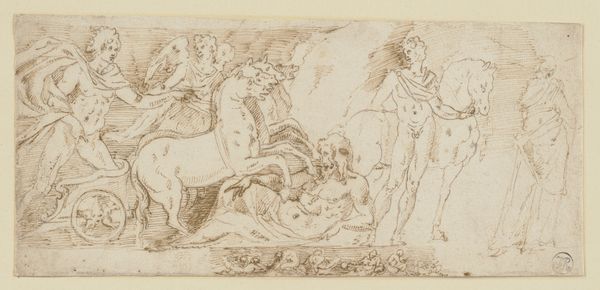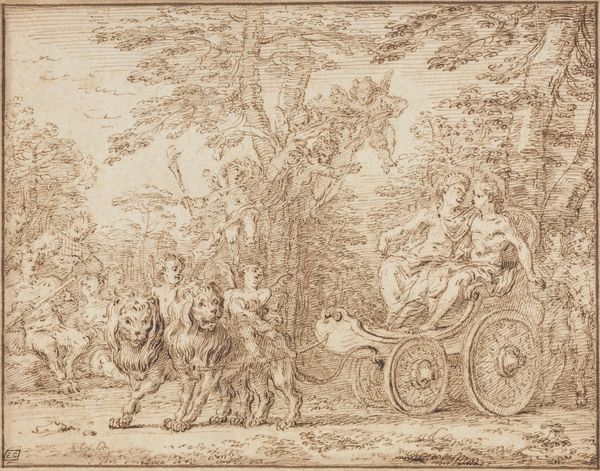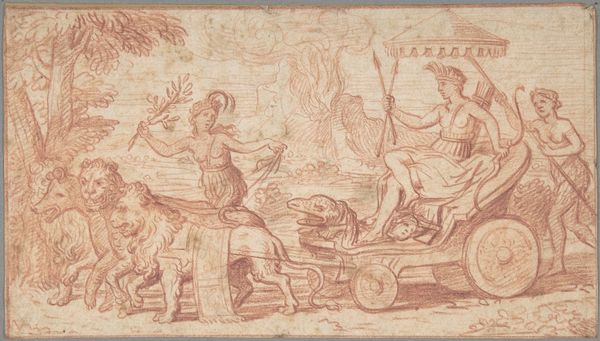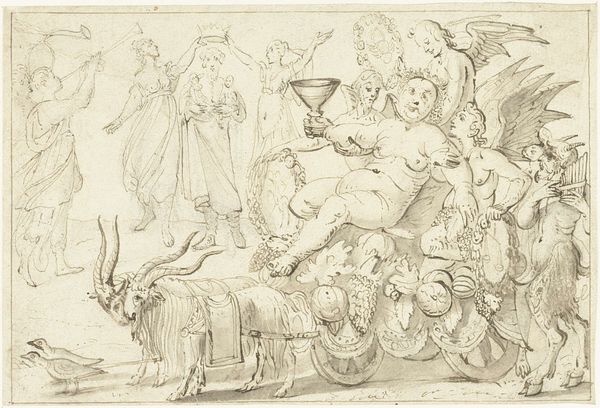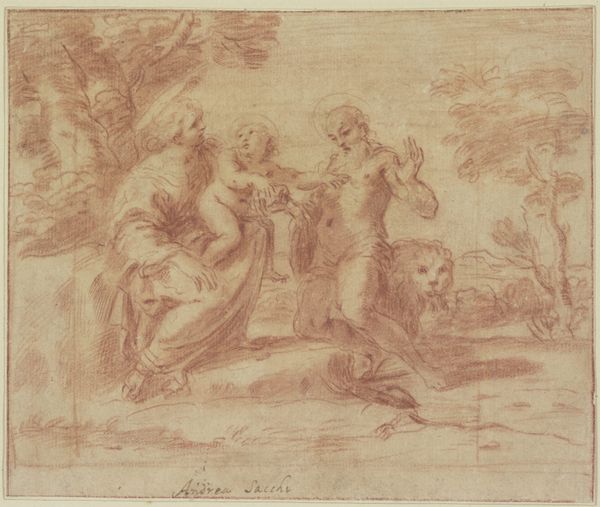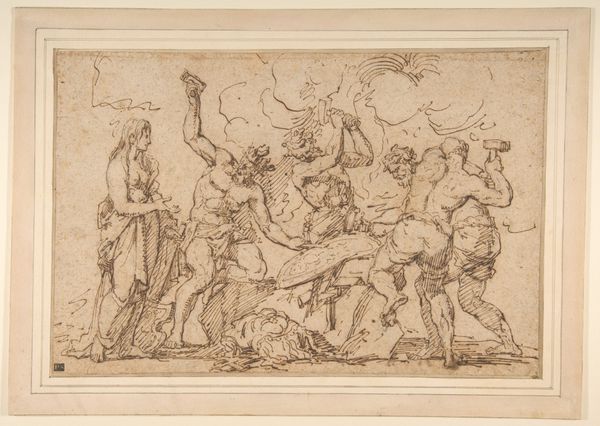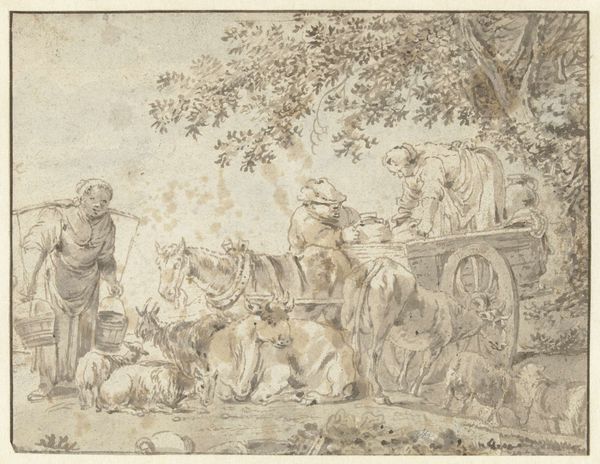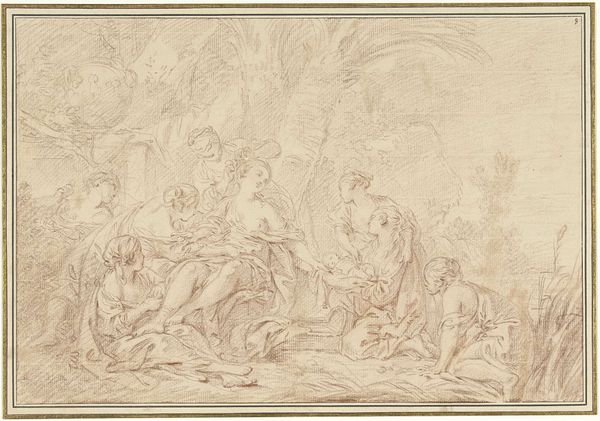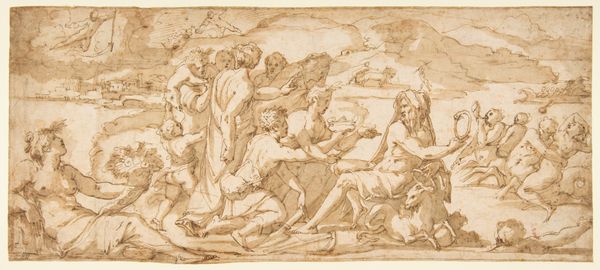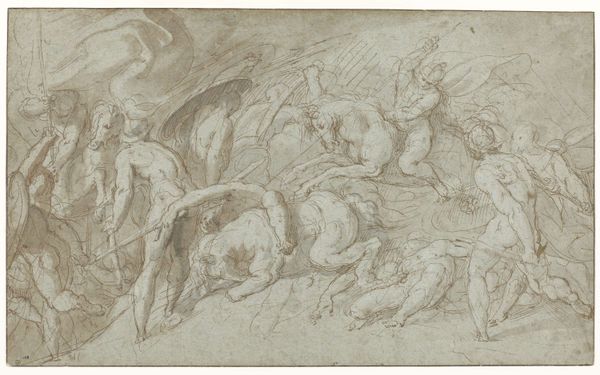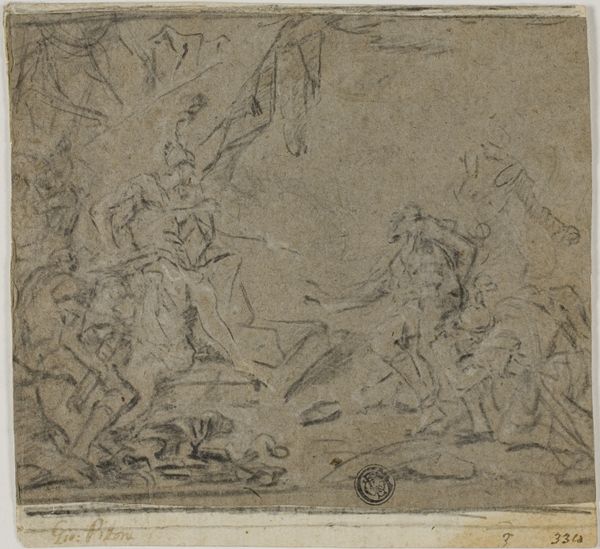
etching, engraving
#
baroque
#
etching
#
etching
#
figuration
#
history-painting
#
engraving
Dimensions: height 51 mm, width 383 mm
Copyright: Rijks Museum: Open Domain
Curator: Matthys van den Bergh created this etching and engraving, titled “Laus Deo in Alinario,” in 1656. Editor: It gives off an antique vibe, like a frieze from an old monument. I’m struck by how lively the composition feels. There are many human figures in motion! Curator: That impression resonates. “Laus Deo in Alinario,” translating to “Praise God in Alinario,” uses the language of historical painting to elevate a contemporary subject: possibly an allegory of a key societal moment from that era. Editor: You see it drawing parallels? It reads more like a classical procession to me. Given its date, could the artist have meant it as an allegory of peace after one of the major European wars? Who commissioned it, and for what space? Understanding patronage illuminates meaning. Curator: Indeed! Visual art of the baroque style aimed to reflect not only social norms, but, equally important, to instruct viewers through complex and hidden iconography about those same conventions. Looking closely, we see figures who may represent various social classes bringing offerings to the chariot rider who might be seen as the ruling elite, perhaps allegorically linked to God. Editor: An offering from everyone, unified. What’s fascinating is how Matthys uses line. It gives a textured almost sculptured presence to the scene and creates so much dynamism with his choices! How would that have landed within artistic debates of the period? Was it revolutionary or reinforcing standards? Curator: That very technical element—the emphasis on texture through lines of etching—reflects how baroque aesthetics engaged with social and political power structures and often conveyed moral ideals. The composition is interesting too! A diverse populace comes together to celebrate the existing hierarchical structure... or are they making demands for their role in Alinario, the represented space of government? I keep questioning this “unity” we are seeing. Editor: Right—we can explore its contemporary readings. Considering van den Bergh lived during a turbulent century— the Eighty Years' War was not long concluded by then —the question of ‘who is praised and who does the praising' remains critically open for our investigation. Curator: By acknowledging multiple interpretations and their entanglement with identity and socio-political position, perhaps this artwork can activate dialogue surrounding our present reality. Editor: I agree! A little dive into how a 17th century etching speaks to now.
Comments
No comments
Be the first to comment and join the conversation on the ultimate creative platform.
